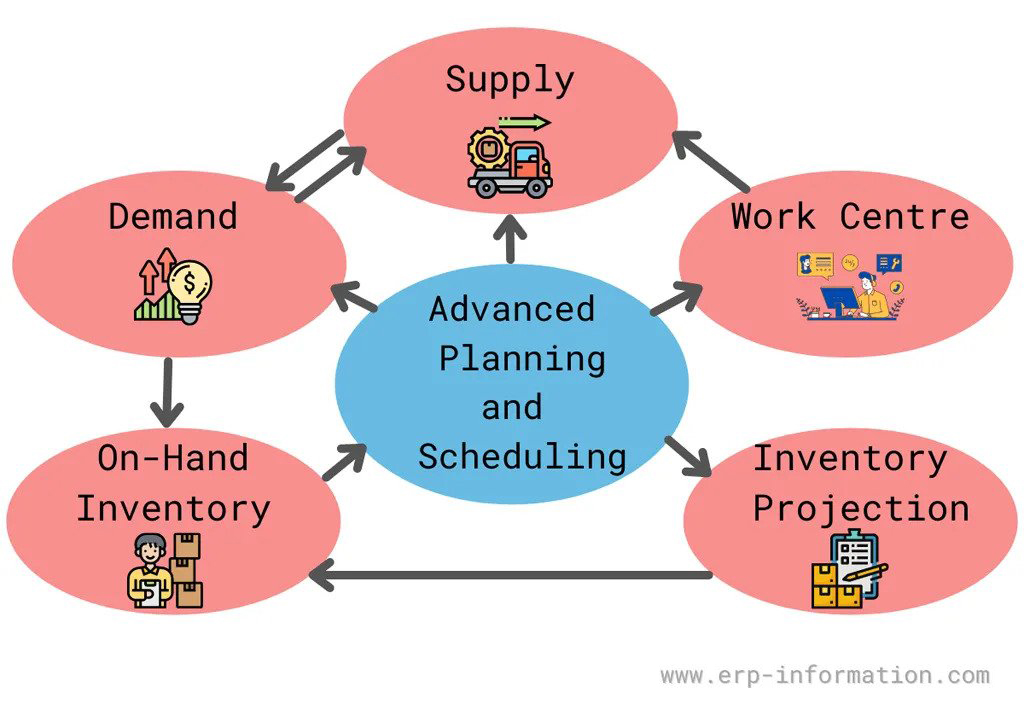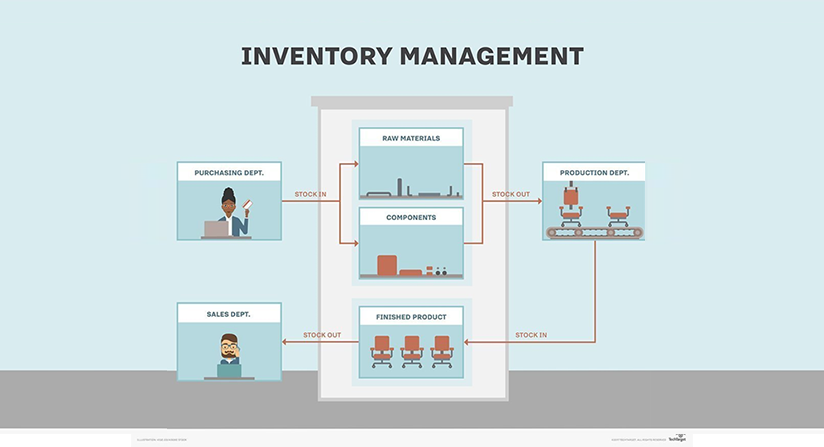30 Second Summary
- APS synchronizes thousands of resources to create accurate production schedules
- It lets you react fast to market changes and deviations in production
- It provides quick ROI through lower costs and increased efficiencies
- Using finite and infinite capacity you can plan for various time horizons
Keeping production running smoothly is essential to manufacturing companies. Yet, it is one of the most challenging problems growing manufacturers face. With increased complexities due to expanded product lines, and with more resources used in production, it becomes difficult to take everything into account. Add in changes like a down machine, a large unexpected order, a shortage of parts, or other issues and it can impact your plant floor.
So how do you keep up with the many variables that affect production operations? How do you react quickly and intelligently to unexpected changes to meet customer demands? An Advanced Planning and Scheduling (APS) system helps you proactively solve these situations to keep production streamlined. It lets small and midsize manufacturers, who may have only one planner, easily manage production planning and scheduling by taking into account all factors for production to simplify the complexities.
Let’s look at how APS works, and how it helps manufacturers keep their shop floor running smoothly and at capacity.

What Is Advanced Planning?
Advanced Planning is a strategic decision tool that helps you plan out in days, weeks, months, or a combination of all three using finite or rough-cut capacity modes with multiple or no constraints. It considers forecasts and long-term orders and supports decision-making about the feasibility and the general direction of productions to ensure an accurate model of your environment.
Advanced Planning identifies the demand for multi-plant entities and consolidates orders for more efficient procurement. It uses advanced algorithms, behind the scenes, to balance demand and capacity. It lets you explode the Bill of Materials (BOM) and calculate the production plan for lower-level items in the same way. You can use Material Requirement Planning (MRP) to automate purchasing and production to ensure inventory levels are optimized and available.
Advanced Planning supports major operational capacity decisions surrounding extending the workforce, resource capacity (machines, labor, tooling, materials, and more), and plant floors. It helps you determine what and how much to make, where and when to make it, and exactly what materials and resources are required. Visualize production schedules, current load, resource capacity, and bottlenecks. Advanced Planning lets you identify priority work orders and try multiple “what-if” scenarios and foresee the downstream impact. React quickly and intelligently to expected and unexpected changes to your production and update your production schedules digitally.
With Advanced Planning, you can use make-to-order planning to assess the effects of future demand changes and determine if it’s possible to meet new requirements when a change in demand, quantity, or delivery data occurs. Make-to-stock planning generates an accurate and achievable schedule considering rough-cut capacity, target days of stock cover, minimum and maximum re-order quantities, and more. It works with Advanced Scheduling so schedule information can get sent back to the planning system to override planned volume with scheduled volume. The Master Production Schedule (MPS) can then be re-calculated using the production schedule as the base for new results. Advanced Planning lets you run quickly and intelligently with practice reports and alerts already configured right out of the box.
What Is Advanced Scheduling?
Advanced Scheduling uses all of the factors related to production and considers them to produce schedules that will work for your environment. It takes into account constraints such as tools and materials available and uses built-in rules to create an optimal and achievable schedule. Advanced constraint modeling lets you model various resource constraints including primary, secondary, materials, resources, tooling, labor, and machines. Order-based multi-constraint scheduling lets you create order-based schedules and apply a ranking or weighting to prioritize orders based on resources available and additional constraints. Advanced Scheduling works interactively with multiple or no constraints and lets you generate, modify, update, and visualize production schedules to meet your needs.
Advanced Scheduling helps you make smart decisions around whether to add overtime, which orders should get prioritized, if batches should get split or due dates negotiated, etc. Interactive scheduling or the scheduling workbench, lets you visualize and interact with your production schedule. Click and drag to move a production item from one planning period to another to see how that changes the schedule and then change it if needed, save it, and push it out to the whole production schedule. As things change, the planner can update the scheduler to adjust things based on new information or other factors to prevent bottlenecks.
Schedule optimization rules can be defined to incorporate things such as minimal changeover times, WIP, stock levels, and preferred sequencing. Using advanced material handling, you can implement custom rules about how materials are consumed to ensure sub-assemblies and raw materials are used according to business rules. Advanced Scheduling lets you take into account your business objectives, forecasts, demand, and capacity constraints and the system lets you know what and how much to make, where and when to make it, and what resources are needed to make the products. It has comprehensive traceability to let you trace and manage changes, costs, delays, and more.
How Advanced Planning and Scheduling Helps You Achieve Fast ROI and Major Benefits
If you have doubts about whether your business needs Advanced Planning and Scheduling, continue reading. Based on case studies, companies using Advanced Planning and Scheduling recover their investment in a matter of months, in most cases, with the savings and efficiencies it generates. It has been shown to boost plant productivity by 25%, reduce inventory by 50%, and improve deliveries by 80%!
Benefits include real-time visibility across the organization using an interactive and graphical planning board. You can also better strategize with tools that let you make short-term tactical and long-term strategic plans for months and years ahead. It takes machines into account to reduce downtime and it streamlines production so fewer man-hours are needed. Inventory carrying costs are reduced with order consolidation and the scheduling of machines, materials, people, and contracted services optimized.
Advanced Planning and Scheduling Use Case Example
Siemens Mobility, a leader in transport solutions, was having difficulty expediting the throughput time of their railcar body surface treatments that involve 32 work steps. They were experiencing challenges with production bottlenecks and late deliveries.
Siemens Mobility implemented Advanced Planning and Scheduling integrated with their ERP system and is now experiencing faster, more precise, and more detailed capacity planning for all of their production resources. They have been able to efficiently schedule all available production resources, and changes or faults are reported back in real-time and taken into account in scheduling. They have revised work plans with a developed template and distributed the solution over all of the workstations in the surface coating area.
Since implementing APS, Siemens Mobility has been able to reduce the proportion of non-value-added work by up to 60 percent and the lead time by 10 percent. With more precise schedules they have reduced non-conformance costs. Siemens has coordinated throughput data with process and drying times. They see a payback period of two years and the high-quality source data produced will enable improvement in productivity and efficiency in follow-up projects. As a result, they plan to use the software in other parts of the business including their body shop.
How Can Advanced Planning and Scheduling Enhance Your Business?
Advanced Planning and Scheduling lets manufacturers synchronize thousands of resources including machinery, staff, raw materials, and work in progress (WIP). It removes manual planning and replaces it with a dynamic system that lets you create accurate schedules. Information is accessible and you have visibility across the business to make smart decisions. With APS you can be assured that deliveries can be made on time to improve customer satisfaction. It lets you maximize capacity and reduce staff and machine downtime.
Advanced Planning and Scheduling provides shorter lead times to meet customer demands and easier, more rapid responses to unexpected production changes. By knowing the lead time needed for procurement and production, you can be assured orders are delivered on time. You can work with projected and actual supply chain demand to create production, purchasing, and inventory schedules. And, using sales orders and historical sales patterns you can forecast inventory demand to ensure you meet minimum stock needs.
With Advanced Planning and Scheduling your business can streamline your production operations to allow you to take on more product lines. You’ll reduce frustration for production employees. There will be less waste of resources and inventory costs will get reduced. Your business will better compete by having the flexibility to meet changing deadlines and plan for demand.
Advanced Planning and Scheduling with ERP
For Advanced Planning and Scheduling software to see across your business and share data with sales and purchasing, it needs to work with an ERP system. Without integration to ERP, it cannot perform quick decision-making functions when changes happen to supply, demand, or manufacturing processes. Integration with an ERP system allows you to take advantage of its essential operational data.
ERP software that is integrated with a modern Advanced Planning and Scheduling system helps manufacturers create optimized schedules that provide increased production efficiency and better delivery performance. You can adjust to changing priorities, maximize throughput, and have company-wide visibility of resource capacity.
Conclusion
Advanced Planning and Scheduling is essential for small and midsize manufacturers that are growing and need help managing production planning and shop floor scheduling. It simplifies all of the complexities of planning and scheduling with interactive and visual tools. With the ability to predict inventory based on sales orders, demand and safety stock can be kept to a minimum.
Advanced Planning and Scheduling lets manufacturers anticipate manufacturing resource needs, orchestrate efficient use of resources, and achieve greater service and profitability.
To learn more about Advanced Planning and Scheduling speak to one of our experts.
Follow Us





